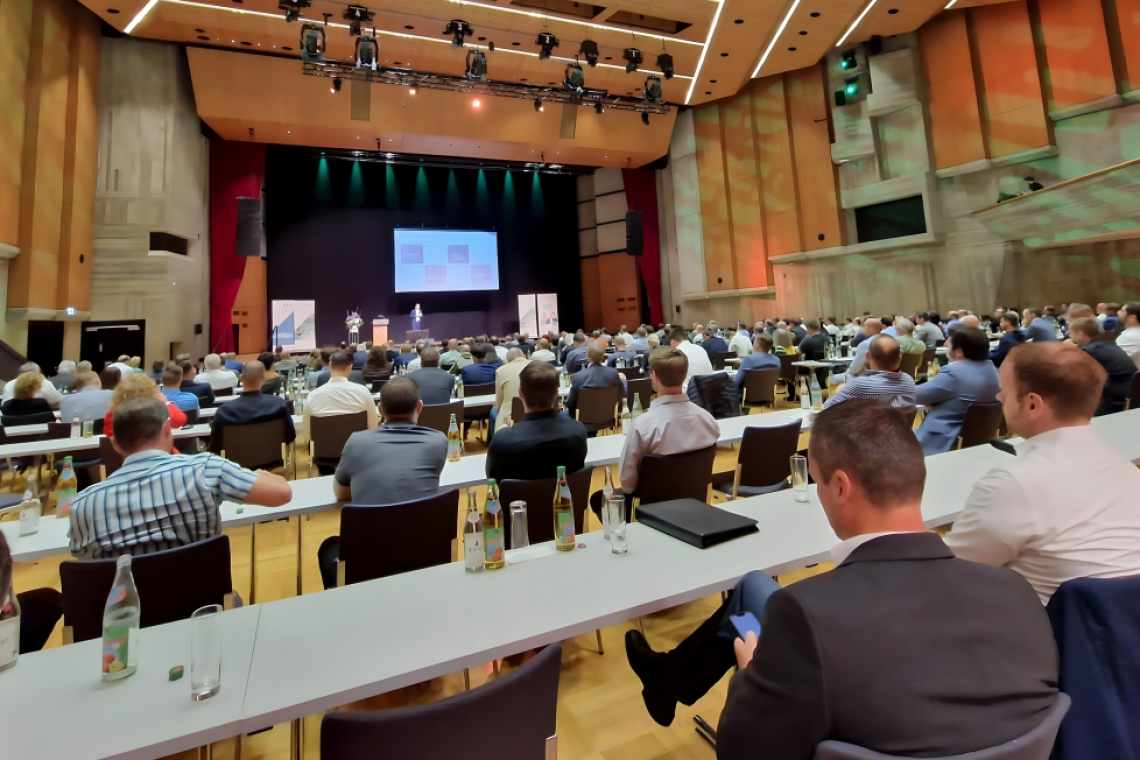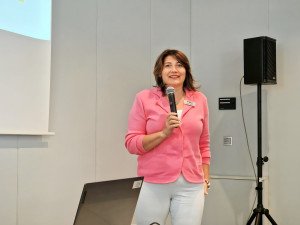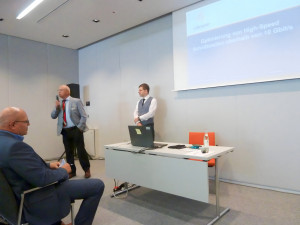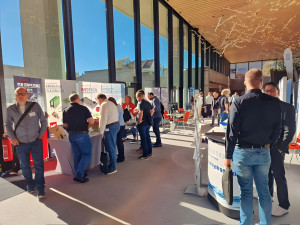Midsummer temperatures, bright sunshine: the 31st FED Conference was under a good star in terms of weather. At the end of September, the late summer was at its best - and showed off the venue, the Augsburg Congress Hall in the Park, to its best advantage. More than 360 visitors gathered in the imposing building, which was built in 1964 in the brutalist style designed by architect Max Speidl. The number of visitors meant that the conference broke the record set the previous year. The foyer, where 47 exhibitors presented their innovations at stands, was flooded with light. The wide aisles of the foyer invited visitors to linger at the stands. Groups formed everywhere, where people discussed, contacted and even joked. The catering area and the tables for coffee breaks also invited people to chat. The congress hall proved to be the perfect venue for the event, which was organized with great professionalism and cordiality by the FED team.
The event kicked off with a keynote speech by Prof. Dr. Markus Sause, Director of the Artificial Intelligence Production Network (A.I.) at the University of Augsburg. The topic of A.I. has been on our minds for months - electronics design and production are also electrified by the potential that the use of A.I. promises: efficiency, cost savings, relieving skilled workers of standard tasks ... Skilled workers, mind you, who - according to Prof. Sause - "we may soon no longer have". Above all, Prof. Sause presented the 'Research Hall 43' at the University of Augsburg, where research is carried out at and with the A.I. across all institutes. Of course, he did not miss the opportunity to talk about the hype surrounding the chatbot 'ChatGPT' from the American company OpenAI. As fascinating as the chatbot is, it is still less of an A.I. than a clever algorithm - a well-trained parrot. But Prof. Sause illustrated the rapid development of the technology: A.I. is demonstrably better at diagnosing breast cancer on scan images and can significantly speed up construction processes. At the same time, new questions are arising - some of an ethical nature, some of a practical nature. Collaboration between humans and robots (cobots) must improve, and this touches on unfamiliar areas such as psychology. This is a focus of 'Industry 5.0' - the term certainly raised eyebrows.
After the keynote, the extensive lecture program began. We were able to attend the presentation by Dipl.-Ing. Daniel Ertl (CiBoard) on the optimization of high-speed interfaces above 10 Gbit/s, which was introduced by moderator Dipl.-Ing. Wolfgang Kühn (FED Regional Group Leader Jena). Daniel Ertl delivered a challenging presentation that covered many details, from the basics of high-speed interfaces to simulation options and the enormous increase in signal bandwidth.
The presentation by Andrzej Wozniczka (TÜV Rheinland) on OT security was remarkable. With great seriousness and emphasis, he warned of the dangers and pointed out regulations that await companies from 2024 (including KRITIS and NIS2/CRA). Everyone should make a note of the deadline of November 1, 2024, when they come into force.
The presentation by the 'Solderpunks' caused quite a stir. Jörg Trodler spoke about the dark side of mining, child labor, problematic working conditions and toxic electronic waste - topics that are still often ignored. However, Trodler also pointed out initiatives that are tackling these issues, such as the 'Commown' cooperative for sustainable electronics.
It was probably the most discussed presentation of the conference. Even though we were unable to attend the second day: In terms of content and organization, it was yet another step up from the previous year and showed how significant an association like the FED is for the industry.






